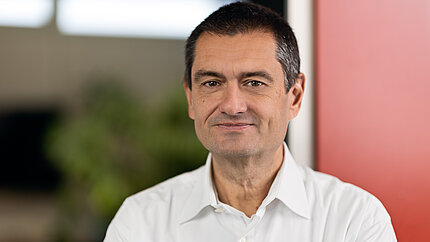Unlimited mobility
It is already foreseeable that most of the megacities resulting from urbanization will emerge in developing countries in Asia and Africa. Cities that currently play a subordinate role in terms of size and population will also grow rapidly.
Within these megacities, different mobility concepts are naturally required than in rural areas. Mobility in rural areas is more individual in nature and covers longer distances, which is why most rural residents can hardly do without their own car. In megacities, on the other hand, this individual mobility is simply impossible. Instead, universal means of transportation must be provided within a megacity, which are available in short cycles so that the inhabitants of the city can reach their destination reliably and quickly in transportation facilities that are not completely overcrowded.
Mobility concepts are also subject to constant change, as the developing megacities are accompanied by a huge demand for energy. Mobility generated from fossil fuels is not a sustainable solution due to emissions, efficiency and ultimately availability. Urban development must be sustainable and resource efficient.
Sustainable Drive Technologies
To create a long-term, comfortable living environment, cities are running initiatives to include reducing and managing food waste, boosting green spaces for healthier environments, and reconnecting cities with surrounding rural areas. Housing initiatives include repurposing vacant properties and tenure systems, while on-demand shared mobility, ride-hailing and micro-mobility (ie scooters) aim to address the transport challenge. A pre-requisite for urban transport modes is that they are electrically powered. And when talking about ‘transport modes’ we’re not just referring to cars, trams, and subways, but also to elevators and escalators.
Millions of people around the world already use elevators every day. Passenger elevators can be found in residential buildings, commercial buildings, hotels, shopping centers, clinics, public facilities and many other buildings. But elevators are not only used to move people across different levels every day - loads are also transported on construction sites, in factories or other industrial facilities. Safety, flexibility and dynamics are the core requirements for electromagnetic brakes and clutches in the transportation sector.
The challenges in megacities have already triggered some ground-breaking, unconventional concepts to move people and products. An example are elevator cars that move vertically, but also horizontally in the shaft. Such projects are in the test phase.
The electric drives of such transportation systems must, of course, be engaged and disengaged, quickly decelerated, and braked as needed. Safety functions such as stopping in the event of a power failure are also required. Therefore, we see our task as keeping pace with technological developments by continually developing the appropriate braking solutions for electric drives, thus ensuring the safety of the cities of the future.
Electromagnetic brakes deliver optimal passenger safety
Electromagnetic technology is a tiny, but crucial, element in an elevator system. In an elevator system, the cabin is driven by a drive system that operates the movements, speed, and torque of the cabin. Electromagnetic brakes are part of the system, and make sure the cabin is engaged and disengaged, decelerated quickly if necessary, and braked, also in the event of a power failure.
Electromagnetic lift brakes work according to the fail-safe principle. They are closed in a de-energized state and thus also provide security in the event of an emergency stop or power failure. When the brake is de-energized, multiple coil springs press against the armature disc. The friction lining carrier, which is connected via interlocking with the motor shaft, is clamped between the armature disc and the motor mounting surface. The axis is braked. When the magnetic coil is energized, a magnetic field builds up, which counteracts the spring forces and pulls the armature disc against the coil carrier and then releases the friction lining carrier and thus also the motor shaft. The brake is released.
As safety is paramount with electromagnetic brakes for elevator technology, our brakes are certified in accordance with the most common global safety guidelines and standards (Lift Directive 2014/33/EU, EN81-20, EN81-50) and are offered as a redundant system. They therefore offer a high level of reliability and make a significant contribution to elevator safety. In addition, the electromagnetic brakes do not suffer any permanent damage in the event of an emergency stop and can therefore withstand many emergency stops without having to be replaced. The status of these brakes can be monitored contactlessly, continuously and automatically. This means that the brake automatically indicates when maintenance or replacement is required.
Braking into the future, together
As city planners, building designers, and manufacturers of transportation equipment explore new solutions to megacity challenges Kendrion is there to support them with expert braking technology. Our broad portfolio electromagnetic brakes meets pretty much any application in the field today. And, we’re working with companies around the globe to deliver customized braking solutions for their latest innovations. With our broad portfolio, extensive industry know-how, and many years of experience we are perfectly positioned to help deliver smart solutions for the megacities of today and tomorrow.
Find out more about electromagnetic brakes and their areas of application on our website!
Are you looking for a brake solution for your application? Then get in touch with us! We will be happy to help you find the right electromagnetic brakes.






